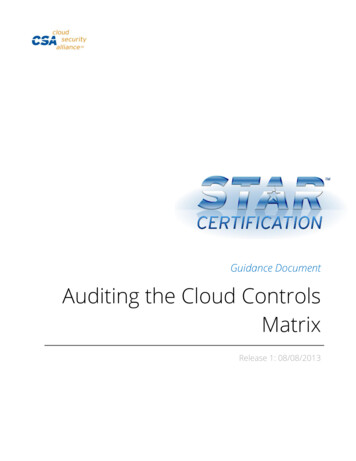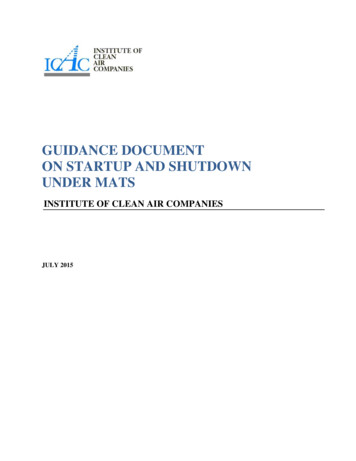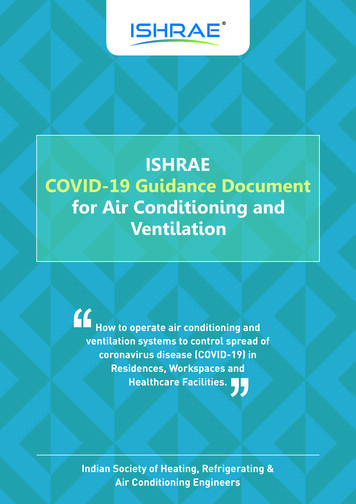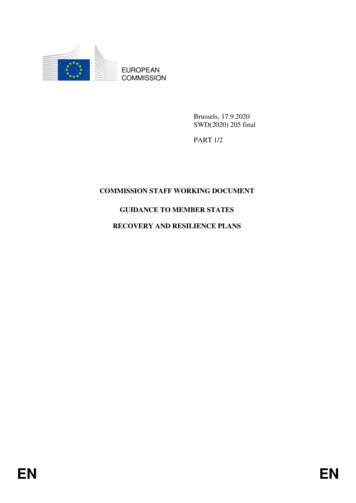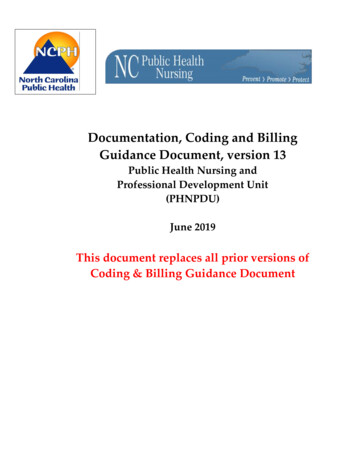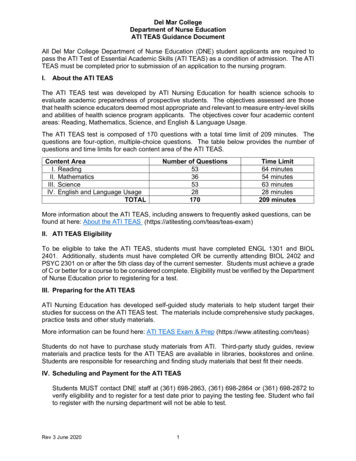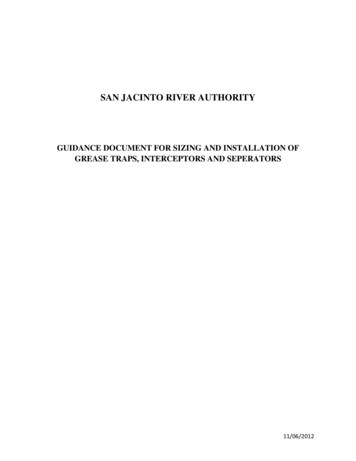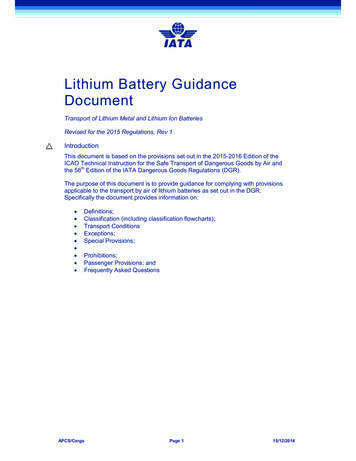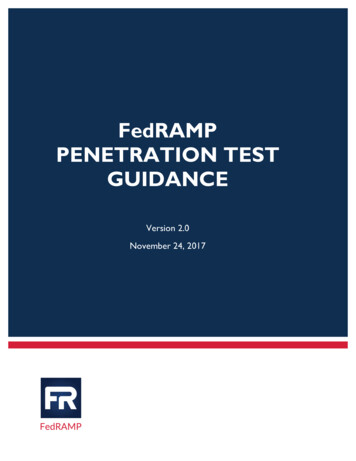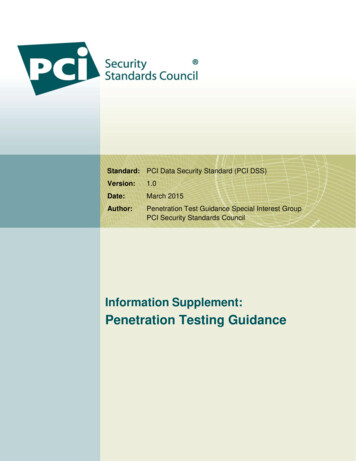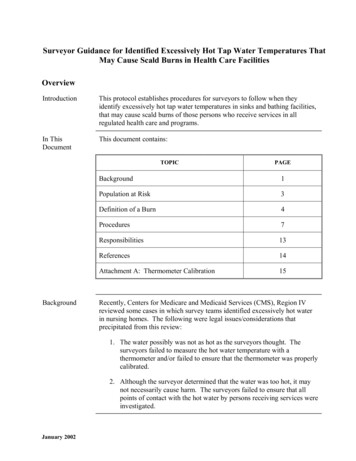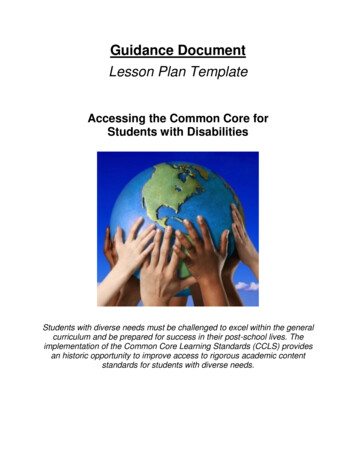
Transcription
Guidance DocumentLesson Plan TemplateAccessing the Common Core forStudents with DisabilitiesStudents with diverse needs must be challenged to excel within the generalcurriculum and be prepared for success in their post-school lives. Theimplementation of the Common Core Learning Standards (CCLS) providesan historic opportunity to improve access to rigorous academic contentstandards for students with diverse needs.
Table of ContentsTitlePage # Introduction .1 Sample Lesson Plan Template .2 Specially Designed Instruction (SDI) Classroom Summary Sheet .4 Glossary of Terms.5 References .10 Appendices Appendix A:Completed sample lesson plan using Grade 6 – Module 1: Unit 1, Lesson 1 Appendix B: A Completed SDI Classroom Summary Appendix C:Individualized Education Program (IEP) and Lesson Plan DevelopmentHandbook Appendix D: Annotated Lesson PlanCreated by Katy B. Weber and Valerie Cole members of the NYSED SDI Workgroup 2014
IntroductionThe lesson plan template and the classroom summary were developed tosupport educators in embedding specially designed instruction (SDI) into lessons thatare aligned with the Common Core Learning Standards (CCLS). The foundation ofthese tools is rooted in the research around the elements of explicit instruction. Thisapproach is “a systematic method of teaching with emphasis on proceeding in smallsteps, checking for student understanding, and achieving active and successfulparticipation by all students” (Rosenshine, 1987). Over the past 20 years, research hasshown that explicit instruction is the most effective evidence-based method forinstructing all students and primarily those students with disabilities.Explicit instruction is the foundation by which SDI is delivered. SDI is defined in34 CFR section 300.39(a)(3) and section 200.1(vv) of the Regulations of theCommissioner of Education to mean “adapting, as appropriate to the needs of aneligible student, the content, methodology, or delivery of instruction to address theunique needs that result from the student’s disability; and to ensure access of thestudent to the general curriculum, so that he or she can meet the educational standardsthat apply to all students.” SDI is the intentional and purposeful planning of instructionto ensure that students with disabilities can meaningfully access, participate andprogress in the curriculum throughout the entire lesson.These tools were created by the SDI Workgroup through the Regional SpecialEducation Technical Assistance Support Center (RSE-TASC). The RSE-TASC networkis one of the P-12: Office of Special Education’s primary resources for schoolimprovement in New York State. Special Education School Improvement Specialists(SESIS), Valerie Cole and Katy B. Weber were instrumental in creating these tools anddelivering professional development for educators across the State to improve resultsfor students with disabilities.Note: These tools are a resource and may be adapted to meet varying needs ofeducators.Created by Katy B. Weber and Valerie Cole members of the NYSED SDI Workgroup 2014Page 1
Sample Lesson PlanAccessing the Common Core for Students with DisabilitiesSpecial Education Teacher:Class:General Education Teacher:Date:Teaching Assistant:Teacher Aide(s):Standards to be addressed:Common Core Learning Standards (CCLS):Career Development and Occupational Studies (CDOS):Topic and Context:Objective (Learning Target):Verb:Context:Special Considerations (Accommodations, Modifications, Assistive Technology, Strategies):Student NameStudent NameNecessary prerequisite skills:Assessment of prerequisite skills:Explicit Core InstructionIntroduction:- objective- learning target- key vocabularySpecially Designed InstructionObjective (Learning Target):Accommodations:Activate Prior Knowledge:Strategies(Learning and Teaching Strategies):Vocabulary:Connect to previous learningTechnology/Equipment:Connection to previous learning:Created by Katy B. Weber and Valerie Cole members of the NYSED SDI Workgroup 2014Page 2
Active Teaching/ Modeling/“I Do”:- Demonstration- Think Aloud- Provide model &/or rubricGuided Practice/“We Do”:Provide time for:- Small group work- Discussion- Teacher/ studentobservation & feedbackDescription of “I Do”:Accommodations:Exemplary, Model or Rubric:Strategies:Practice Activity with teacher corrective ials:Strategies:Check for understanding:Technology/Equipment:Task/Materials for independent practice:Accommodations:Assess before moving toindependent practiceIndependent Practice/Application/ “You Do”:Strategies:Multiple practiceopportunities to ensuresuccess(90%)Lesson :Strategies:Technology/Equipment:Created by Katy B. Weber and Valerie Cole members of the NYSED SDI Workgroup 2014Page 3
Classroom Specially Designed Instruction (SDI) vironmentMaterialsHow learningis measuredContentInstructionCreated by Katy B. Weber and Valerie Cole members of the NYSED SDI Workgroup 2014Page 4
Glossary of Terms(These definitions are following the order of the terms in the Lesson Plan Template)SE Teacher (Special Education Teacher): Special education teacher means anindividual who is certified or licensed to teach students with disabilities who is providingspecial education to the student.GE Teacher (General Education Teacher): General education teacher means ateacher who is qualified to serve nondisabled students who is providing generaleducation instruction to the student.Teaching Assistant: A teaching assistant can assist in the delivery of specialeducation services but cannot serve in place of a special education teacher. (e.g.,working with groups of students on instructional projects, provide teacher informationabout students, assist with testing accommodations, development of materials, etc.)Teacher Aides: Teacher aides perform noninstructional duties. (e.g., assistingstudents with behavioral needs, set-up centers, or upcoming activities, make copies,manage records, materials, equipment, watching students during recess, halltransitions, etc).Class: For purposes of the lesson plan document, this term means the setting in whichstudents with disabilities are receiving instruction in the general education curriculum.Consultant Teacher Services (CT): Consultant Teacher Services are defined asdirect and/or indirect services provided to a school-aged student with a disability in thestudent’s general education classes, including career and technical education classes,and/or to such students’ general education teachers.Direct Services mean specially designed instruction provided to an individual studentwith a disability or to a group of students with disabilities by a certified specialeducation teacher to aid the student(s) to benefit from the general education classinstruction. Direct service can be combined with indirect services.Indirect services mean consultation provided by a certified special education teacherto a general education teacher to assist the general education teacher in adjustingthe learning environment and/or modifying his/her instructional methods to meet theindividual needs of a student with a disability who attends the general educationclass.Resource Room Program: Resource room program is a special education programfor a student with a disability who is in need of specialized supplementary instruction inan individual or small group setting for a portion of the school day.Created by Katy B. Weber and Valerie Cole members of the NYSED SDI Workgroup 2014Page 5
Related Services: Related Service means developmental, corrective and othersupportive services as are required to assist a student with a disability (e.g., speechlanguage pathology, interpreting services, physical therapy, occupational therapy,counseling services, etc.).Integrated Co-Teaching Services:Integrated co-teaching services means theprovision of specially designed instruction and academic instruction provided jointly by aspecial education teacher and a general education teacher to a group of students withdisabilities and nondisabled students.Special Class: Special class means a class consisting of students with disabilities whohave been grouped together because of similarity of individual needs for purpose ofreceiving specially designed instruction in a self-contained setting, meaning that suchstudents are receiving their primary instruction separate from their nondisabled peers.Objective (Learning Objective, Learning Target): A learning objective is a statementthat describes what the student will be able to do successfully and independently at theend of a specific lesson as a result of the classroom instruction. All learning objectivescontain a concept (main idea) and a skill (measureable student behavior).Verb: The skill is the verb in the learning objective. (e.g., “Write a summary of anewspaper article,” write is the skill). The measurable skill is the verb in the learningobjectives. (e.g., solve, identify, write, compute, and describe).Context: A context is any specific condition under which the learning objective will beexecuted. Often the context describes the resources or methods to be used. (e.g.,“Write a summary of a newspaper article,” the context describes the resources to beused - newspaper article).Accommodations:Accommodations mean adjustments to the environment,instruction or materials (e.g., instructional materials in alternative format such as largeprint or Braille, fewer items on each page; extra time to complete tasks) that allow astudent with a disability to access the content or complete assigned tasks.Accommodations do not alter what is being taught.Modifications (Program modifications): Program modification may be used todescribe a change in the curriculum or measurement of learning; for example, when astudent with a disability is unable to comprehend all of the content a teacher is teaching(e.g., reduced number of assignments; alternative grading system).Assistive Technology (Assistive technology device, Assistive technologyservice): Assistive technology device means an item, piece of equipment or productsystem that is used to increase, maintain or improve the functional capabilities of astudent with a disability. Assistive technology service means any service that directlyassists a student with a disability in the selection, acquisition, or use of an assistivetechnology device. The term includes: the evaluation of the needs, purchasing andCreated by Katy B. Weber and Valerie Cole members of the NYSED SDI Workgroup 2014Page 6
leasing of the device, selecting, designing, fitting, customizing, and adapting the device,coordination of the therapy, intervention for the device, along with training and/ortechnical assistance for a student with a disability and the professionals who will providethe service.Strategies: A plan of action designed to achieve a goal.Learning Strategies: Learning strategies are techniques, steps or rules that are afundamental part of the process to acquire, manipulate, integrate, store, and retrieveskills, and information to be applied in a variety of settings and situations. Learningstrategies may be subtle or overt and simple or complex - always matched tostudent need. Learning strategies are student centered and designed to result in anew understanding, deeper knowledge, and generalization.Teacher Strategies: Teaching strategies are teacher centered and require student’sresponse or reaction. Teaching strategies include the structure for effective teachingprovided by the teacher in order to deliver specially designed instruction. Teacherstrategies include student’s engagement and positive behavior managementstrategies such as Hands Up/Hands Down, Give Me Five, Look/Lean/Whisper,Elbow Partners, and Think/Pair/Share.Necessary Prerequisite Skills: A prerequisite skill is a skill that a student hasmastered. The skill needs to be mastered before the student will be able to learn a newskill. There prerequisite skills are reviewed during the opening of a lesson.Assessment of Prerequisite Skills: The key principal to a good review is to verify thatall students know how to perform the prerequisite skills. A review typically consists ofgiving students a task requiring the use of the prerequisite skill(s) and seeing whetherthe students can perform the task correctly. There are several different assessments ofprerequisite skills. Some are direct measures, such as tests, quiz, concept maps,portfolios, and others are more indirect, such as self-reports, the student’s individualizededucation program (IEP), etc.Explicit Instruction: Explicit instruction is a structured, systematic approach toteaching all students. It is an unambiguous and direct method that includes instructionaldesign and delivery. Explicit instruction guides students though the learning processthrough the provision of clear statements regarding the purpose and rationale forlearning the new skill/content, explanations and demonstrations of the instructionaltarget, and supported scaffold practice with embedded, specific feedback in order toachieve independent mastery.Activate Prior Knowledge (APK): Activating prior knowledge is purposefully movingsomething connected to the new lesson from the student’s long-term memories intotheir working memories so they can build upon existing knowledge. Activating PriorKnowledge should be limited to no more than five minutes. The bulk of the class timemust be spent teaching students the new grade-level content.Created by Katy B. Weber and Va
Appendix D: Annotated Lesson Plan. Created by Katy B. Weber and Valerie Cole members of the NYSED SDI Workgroup 2014 Page 1 Introduction The lesson plan template and the classroom summary were developed to support educators in embedding specially designed instruction (SDI) into lessons that are aligned with the Common Core Learning Standards (CCLS). The foundation of these tools is
